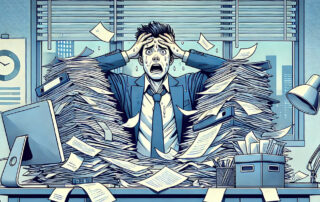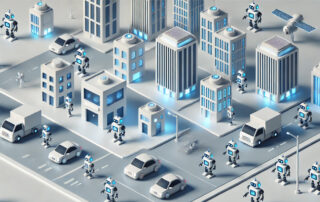The Intersection of Artificial Intelligence and Creative Arts: Unveiling the Boundaries
Table of Contents
Introduction to the intersection of artificial intelligence and creative arts
Artificial intelligence (AI) has emerged as a powerful tool that is revolutionizing various industries, and the creative arts sector is no exception. The blending of AI with creative arts has opened up a world of possibilities, pushing the boundaries of human imagination. In this article, we will explore the fascinating intersection of artificial intelligence and creative arts, delving into its role, examples, benefits, challenges, ethical considerations, future possibilities, famous projects and artists, resources and tools, and the impact on traditional creative industries.
The role of artificial intelligence in creative arts
Artificial intelligence has become an indispensable tool in the creative arts, augmenting and amplifying human creativity. One of the key roles of AI in this field is generating new and innovative ideas. AI algorithms can analyze vast amounts of data, recognize patterns, and generate unique concepts that can inspire artists, writers, and musicians. For example, AI can analyze thousands of paintings and generate new artwork based on the learned patterns, offering fresh perspectives and pushing creative boundaries.
Moreover, AI can also assist in the creation process itself. For instance, AI-powered software can compose music, write poems, and even create entire artworks. These tools act as virtual collaborators, offering suggestions and expanding the creative possibilities for artists. AI algorithms can analyze the style and characteristics of existing artworks and generate new pieces that align with the artist’s vision. This collaboration between humans and AI opens up exciting avenues for experimentation and exploration.
Examples of artificial intelligence in creative arts
There are numerous examples of AI being used in the creative arts, showcasing the breadth of its potential. One prominent example is the creation of “The Next Rembrandt” by Microsoft and ING. By analyzing Rembrandt’s works, AI algorithms were able to generate a completely new portrait in the style of the renowned Dutch master. The painting was so convincingly realistic that it left viewers astounded, highlighting the ability of AI to mimic artistic styles.
Another example is the use of AI in music composition. Companies like Jukedeck and Amper Music have developed AI systems that can compose original music based on user input. These systems can generate melodies, harmonies, and even entire compositions, providing a wealth of creative possibilities for musicians and film makers.
Benefits and challenges of using artificial intelligence in creative arts
The integration of AI in creative arts brings forth a multitude of benefits. Firstly, AI can help artists overcome creative blocks by offering fresh ideas and perspectives. It can act as a source of inspiration, igniting the creative spark. Additionally, AI-powered tools can save artists time and effort by automating certain tasks, such as generating background music or creating visual effects. This allows artists to focus more on the core aspects of their craft.
However, the use of AI in creative arts also poses challenges. One concern is the potential loss of originality and human touch. Critics argue that AI-generated artworks lack the depth and emotional resonance that comes from human experience. Furthermore, there are ethical considerations surrounding the ownership and copyright of AI-generated creative works. Determining the rights and royalties in such cases becomes complex, as AI plays a significant role in the creation process.
Ethical considerations in the use of artificial intelligence in creative arts
The use of AI in creative arts raises important ethical considerations that need to be addressed. Firstly, there is the issue of authorship and attribution. When AI generates a piece of art or music, who should be credited as the creator? Should it be the artist who trained the AI, the AI system itself, or a combination of both? Clear guidelines and policies need to be established to ensure fairness and recognition for all parties involved.
Another ethical concern is the potential bias in AI algorithms. AI systems learn from existing data, which may contain biases and prejudices. If these biases are not addressed, AI-generated artworks may perpetuate social inequalities or reinforce harmful stereotypes. It is crucial to develop AI models that are trained on diverse and inclusive datasets to avoid perpetuating discriminatory practices.
Future possibilities and trends in the intersection of artificial intelligence and creative arts
The future of artificial intelligence in creative arts is brimming with possibilities. As AI continues to advance, we can expect even more sophisticated tools i.e. text to speech and applications in the creative realm. For instance, AI may enable virtual reality experiences where users can interact with AI-generated characters in real-time, immersing themselves in unique artistic worlds.
Furthermore, AI can facilitate collaborative art projects on a global scale. Artists from different corners of the world can collaborate on AI-powered platforms, transcending geographical boundaries and cultural barriers. This opens up unprecedented opportunities for cross-cultural exchange and the creation of truly diverse and inclusive artworks.
Famous projects and artists in the field of artificial intelligence and creative arts
There have been several notable projects and artists who have embraced AI in the creative arts. One such example is the “AIVA” project, which stands for Artificial Intelligence Virtual Artist. AIVA is an AI composer that has created symphonies and soundtracks for various media projects. Its compositions have been featured in films, video games, and even in live performances by orchestras.
Another renowned artist in this field is Mario Klingemann, a German artist and AI researcher. Klingemann explores the boundaries of AI-generated art, pushing the limits of what is possible. His artworks have been exhibited in prestigious galleries and museums worldwide, captivating audiences with their unique blend of AI algorithms and human creativity.
Resources and tools for exploring artificial intelligence in creative arts
For those interested in exploring artificial intelligence in creative arts, there are numerous resources and tools available. Online platforms like OpenAI and Google’s Magenta provide access to AI-powered tools for music composition, image generation, voice cloning, and more. These platforms offer tutorials, documentation, and communities where artists can learn, collaborate, and share their creations.
Additionally, there are academic programs and courses that focus on the intersection of AI and creative arts. Universities and institutions around the world offer specialized programs that delve into the technical and artistic aspects of AI in creative fields. These programs provide a comprehensive education in AI techniques and their application in various artistic disciplines.
The impact of artificial intelligence on traditional creative industries
The integration of AI in creative arts has had a profound impact on traditional creative industries. In music, AI-powered systems can compose music faster and more efficiently, challenging the traditional role of composers. Similarly, in visual arts, AI algorithms can generate realistic images and animations, blurring the lines between human and machine creation.
However, instead of replacing human artists, AI has the potential to complement and enhance their skills. Artists can leverage AI tools to explore new creative avenues, experiment with unconventional ideas, and reach wider audiences. Traditional creative industries can embrace AI as a powerful ally, enabling them to push the boundaries of their craft and adapt to the ever-evolving digital landscape.
Conclusion: Embracing the potential of artificial intelligence in creative arts
The intersection of artificial intelligence and creative arts holds immense potential for innovation and exploration. AI has the ability to inspire, collaborate, and augment human creativity, leading to the creation of groundbreaking artworks, music, and literature. As we navigate the ethical challenges and embrace the possibilities, it is crucial to approach the integration of AI in creative arts with an open mind and a commitment to preserving the integrity and diversity of human expression. By embracing the potential of AI, we can unlock new dimensions of creativity and pave the way for a future where humans and machines coexist harmoniously in the realm of artistic expression.
Final words
Are you curious about the fascinating intersection of artificial intelligence and creative arts? Explore the resources and tools available online, immerse yourself in the world of AI-generated artworks, and unleash your creativity with the help of machine intelligence. Embrace the potential of AI in creative arts and be a part of the exciting future where human imagination and artificial intelligence merge to redefine the boundaries of artistic expression.
Author Bio
Divyesh Bhatasana is a Founder & CEO of Jeenam Infotech LLP who has a passion for helping customers as a Link Building Consultant. You can connect with him on Linkedin.





